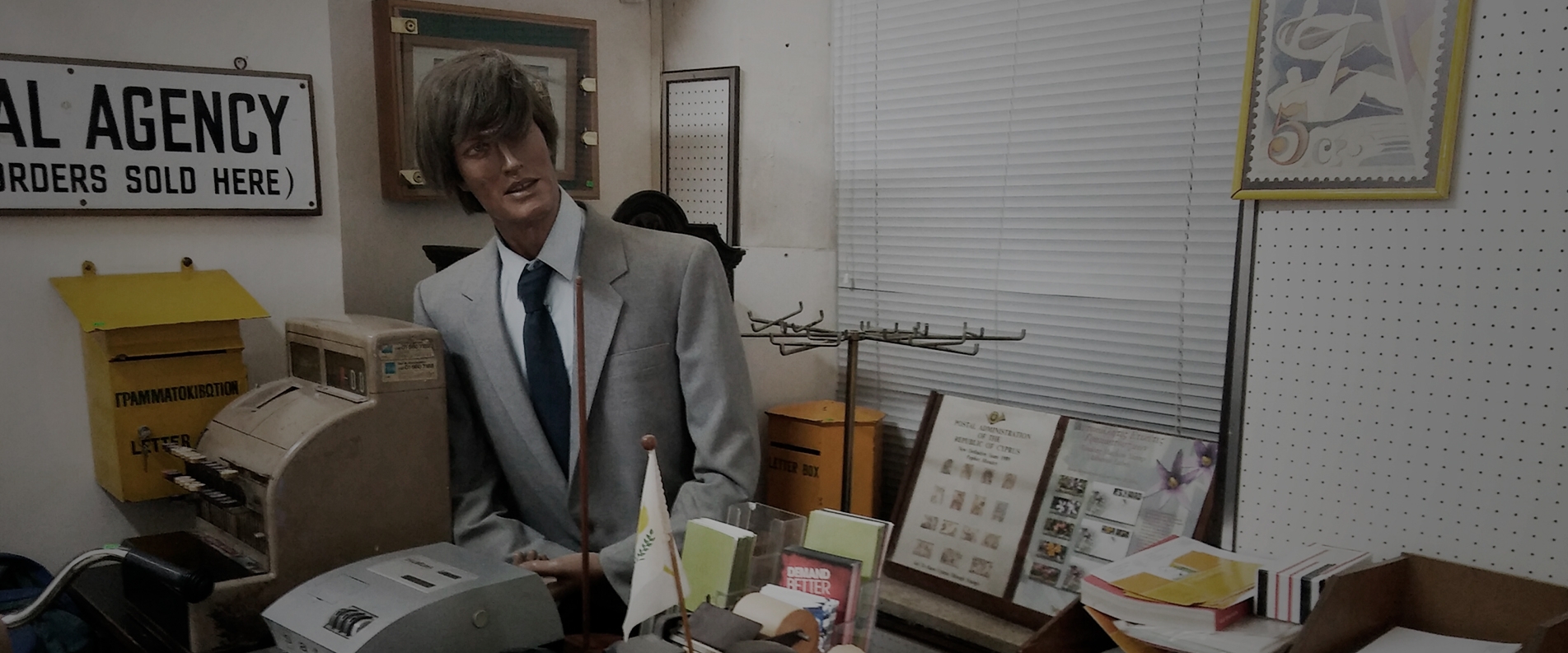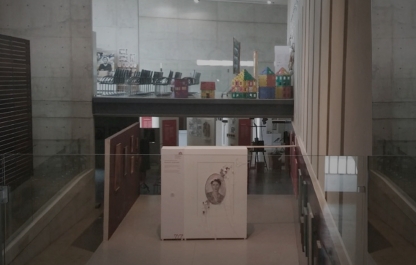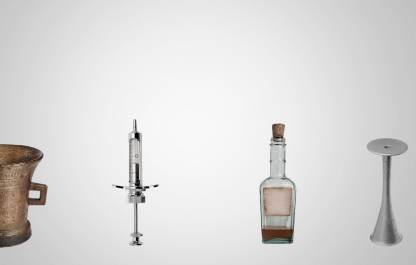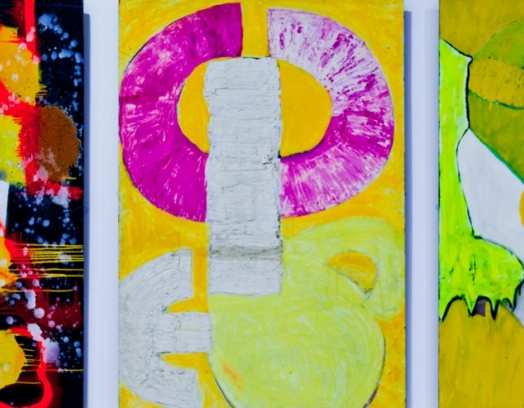Another port of call on our stroll around the old centre was recently added. It will be well suited to those who wish to learn more about Cyprus but aren’t prepared to put themselves out of pocket needlessly.
Nicosia’s postal museum may well be such a place for you: three small halls in an old urban residence illuminate the story of how the postal service developed in Cyprus [1]. Тhis is also a philatelic museum — a particular category of collecting mail with a focus on postal stamps. It also pays particular attention to important events and symbolic moments in the life of the island and its people, accompanying the appearance of each stamp set.
As you well know, philately is the collection and study of postal and duty stamps, as well as other marks to indicate payment of postage. The term was coined in 1864 by the French collector G. Herpin. The FIP — Fédération Internationale de Philatélie — was founded in 1926, and by 1993 had 60 member countries. Amongst the stamp collectors, there were also several representatives of the ruling elite from various countries, as well as celebrities: Karl Marx, Queen Victoria and Elizabeth II, King George V and George VI (Great Britain), A. Einstein and F. Roosevelt (USA), Rainier III (Monaco), Carol II (Romania), A. Dostoevsky (Russian Empire), S. Blekhman (USSR), Farouk (Egypt), Alfonso III (Spain), F. Nansen (Norway), Enrico Caruso (Italy), Jawaharlal Nehru and John Lennon.
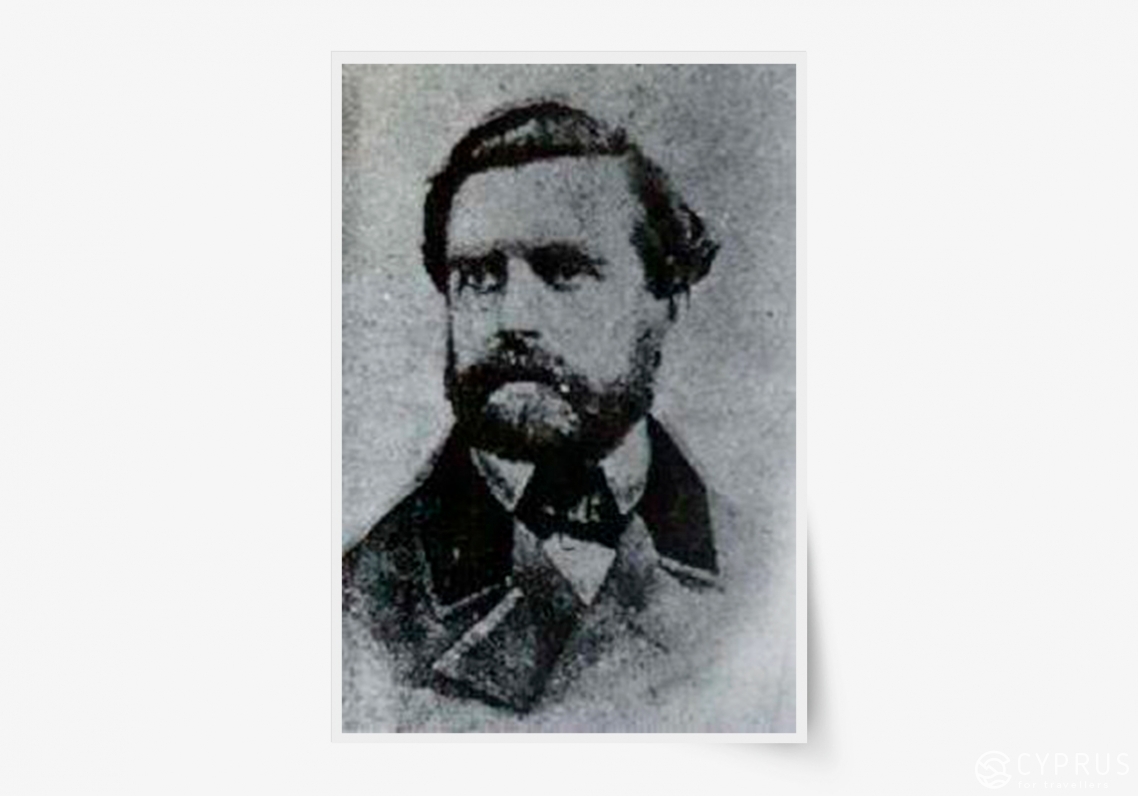
The museum’s item collection includes many sections, one of which involves postal history and the study of stamps. It contains items used in the postal business, such as postage stamps — initially marks issued by the postal department for mail services to collect the post. There are also postcards (topic and plot-themed), envelopes with an imprinted stamp (envelopes of the so-called “first day” — this is a separate story [2]), as well as countermarks.
All this can be seen in the Cyprus Postal Museum exhibition: in three small halls on the first floor of a 100-year-old urban mansion, various objects are chronologically displayed illustrating the processes of creating and developing the postal business on the island. At the heart of the state's collection are various materials, one way or another reflecting the 140-year history of mail service on the island, beginning in with the year 1880.
The practice of mailing messages began under the Venetians (15th century), even before the creation of postage stamps for Cyprus in the era of British colonial rule. It then continued during the Ottoman age (since 1871, mail has been stamped with “KIBRIS” in the Nicosia branch; the Duloz Turkish stamps were most likely also used in part). Thus, as we can see, the development of mail is directly linked to the country’s political history.
According to sources, in the XIX century, various countries had post offices operating in Cyprus. For instance, an Austrian branch (opened in Larnaca in 1864). With the advent of the British powers, UK post began to function on the island, and therefore the first stamps to be crafted were also British. What's more: throughout all the years of British rule on the island, inscriptions on stamps and countermarks were only in English.
Stamps are generally the most important, spectacular and informative part of any postal museum collection, and not only for connoisseurs.
We enter the first hall, demonstrating the postal business from the 1880s to 1960s. Stands have been set up at the very beginning of the exhibition featuring various denominations of stamps from all early period issues: 1880-1935 (the years of their circulation are indicated here). For example: "Victorian" — 1880-1888 (with images of the queen [3]), then her successor Edward VII (the first issue of stamps with the king pictured dates back to 1902-1904), and others.
Those that appeared here in 1880 bore the inscription “CYPRUS” above the image of Queen Victoria and were first put into circulation on the 1st of July 1881. This was the case for the next few decades. They were initially circulated as they were in the United Kingdom, but with a noticeable difference: the same large inscription — CYPRUS — was put on the images of the rulers Edward VII, George V and George VI.
Incidentally, according to the Museum director, the island has never printed its own stamps [4].
In 1928, Cyprus became part of the British economy. This was also the year when the first stamp set was issued on the island. It mainly depicted views, sights and a map of Cyprus, except for one with a portrait of the king. This was made even more momentous as it was the first time in the world that a large set of stamps had been published.
They became very popular as other countries, including Great Britain, France and others, continued to use and issue small stamps.
In 1934, due to high demand, large stamps were again issued — in different types; a little later, in 1938 — the set was once again reissued to everyone.
The Universal Postal Union released a new set in 1945 — in honour of the 75th anniversary of its founding (in 1874).
In 1953, the coronation of Elizabeth II took place, in honour of which stamps were also published. In addition to the first mark, where the queen is depicted in a locket against a coloured background (the “Cypriot” stamp had a green background, one of 106) a large set was issued with views of Cyprus. In the upper corner, there was an image of the young queen.
-
A little further on — fragments of postal envelopes for various items of mail: the paper used was light blue, white and grey in colour. If you examine the exhibits, you can easily see the differences in the countermarks used.
It is evident that the mail service was extremely popular and in high demand on the island in the past, as very many went abroad in search of work, and Cypriot family ties are traditionally very strong! Not all branches on the island used to have envelopes, so Cypriots purchased them pre-stamped from large offices. The colour of the envelopes differed depending on whether the letter was a regular delivery (white envelopes) or recorded (light blue).
Here we can also see aerogrammes (items sent by airmail), the first of which appeared in 1944. Those with imprinted stamps, and later ones with different designs, became available from 1946 onwards.
A neighbouring stand features postcards published by the Government of Cyprus from 1889 to 1976.
Amongst others, the brown newspapers are of great interest to researchers (the news was delivered to subscribers inside them). The first of them were English, also with the stamp “CYPRUS” inscribed, and were issued in 1880, like the first stamps. Their use continued until 1976. Naturally, the design has changed several times. The display cases opposite contain stamps with wooden handles: they were made of cast iron, which, unlike bronze, didn’t succumb to any wear after prolonged and frequent use.
The same hall houses a small archive of scientific publications devoted to philately and the history of studying stamps in circulation on the island. To the connoisseurs out there, I recommend you study or, better yet, acquire the research of “Cypriot stamps: 1880-2004,” co-authored by Mr Ploutis Loizou, the curator of the local museum and a famous philatelist in Cyprus. The book is published in two languages: Greek and English; it’s on special offer at 43 Euro!
No less interesting for experts is the fact that the first overprint for Cypriot stamps (an additional printed image or text) was made a very long time ago, in 1882, and the latest — in 1995, for the international exhibition “Cyprus - Europhilex '95", held in Nicosia.
An interesting detail: it is well-known that under Queen Victoria 1,159 thousand stamps were issued, a little later — 1.2 million had already been issued. A mere 60,000 a year are now printed for circulation on the island. Besides, one British pound used to “cost a lot of money”, and yet under the Brits, thе average Cypriot would post mail for roughly six pounds. Can you imagine!
Not only do the stands display “Cypriot” stamps, but also others which the English had published earlier: to use in other territories and in colonies of the British empire.
Your attention is also drawn by other, easily recognisable exhibits: hanging mailboxes and pillar boxes from different years: the red ones — like in Britain (this colour is easy to distinguish in fog) — are the oldest. They are made of cast iron and have Victoria Regina (V R) on them. Nearby are yellow ones from the countryside and the urban districts of Cyprus: they were usually positioned near kafenios, and mail was collected from them once a week ... Besides, originally cast in the likeness of the British ones and painted in the same red colour, the pillar boxes in Cyprus have further undergone changes, both to the colour and the symbols cast on them. Today you will see on them the emblem of Cypriot post: a postman’s horn, with the country emblem placed in the curl. After joining the European Union, and according to the decision made there, Cyprus, like other EU countries, will soon unify its mailboxes under a single dark blue colour!
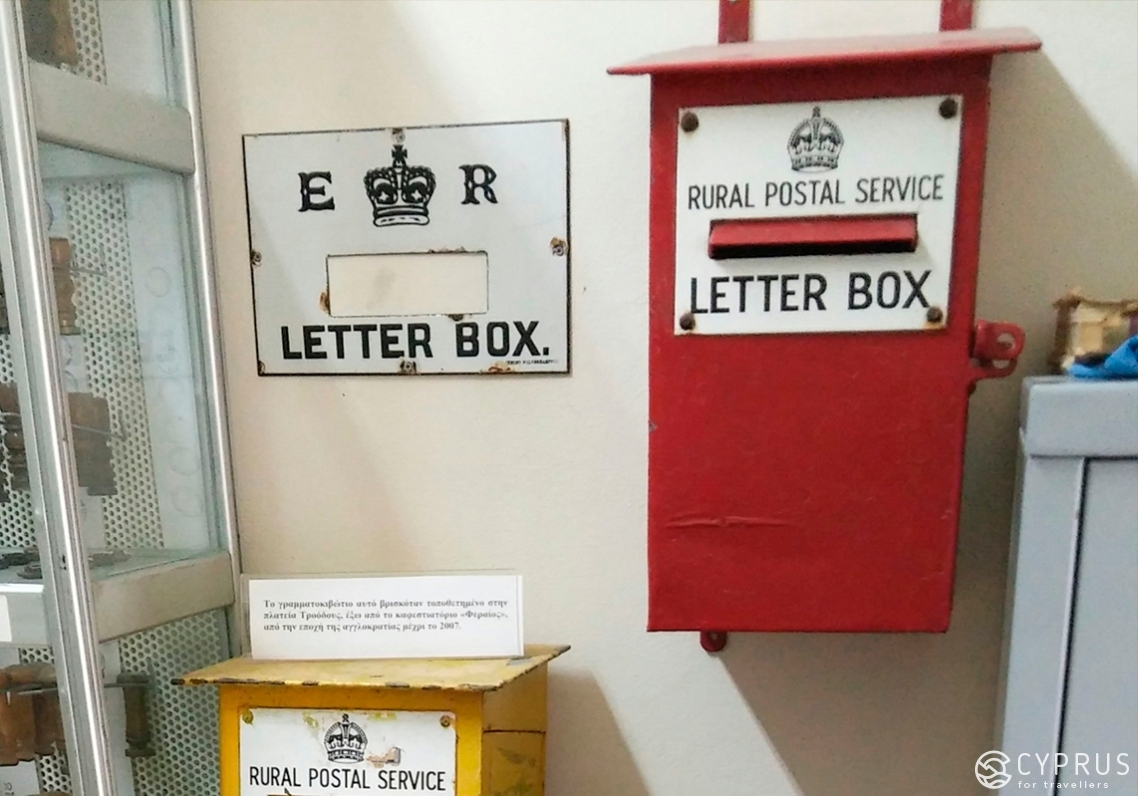
In addition to the mechanisms, devices and accessories that were directly used to ensure the operation of post offices, you will also encounter a curious collection of fans (from the 1930s), typewriters, tokens and other small things that were commonly used in the past.
Each new set edition has always been made to coincide with some important date or holiday: for instance, the Christmas sets from 1972 and 1976, and others.
A Little off Topic…
At the entrance, you have the opportunity to purchase original souvenirs (stamps, old coins, etc.) or just take a card as a souvenir. The Museum offers its collector guests stamps which have been in publication since 1964. You can buy stamps of a particular year as a present for somebody. On the whole, in fact, it is tough, as I was informed, to find non-cancelled brands in Cyprus! It is easier to find them glued to envelopes, which are much more expensive than the stamps themselves.
For rare stamp collectors, this is a real expanse: in the museum foyer, you will be able to purchase stamp albums with a selection of old and used stamps. Numismatists will most likely want to spend time studying the ancient coins also on sale. Guests with a curious mind will simply have the opportunity to be gifted with old postcards published by the Post Office, using rare photos for various memorable dates.

The second room is the most spacious of the museum halls and talks about a later period, starting in 1960. Here we can see all stamp sets published up to our time.
It is interesting that immediately after gaining its long-awaited independence, the Republic of Cyprus did not yet have time to launch its own stamps. Therefore, in its first year of freedom, the Bank of Cyprus released only one set. The image was an edited copy from a memorable photograph, in which the last governor on the island, Sir Hugh Macintosh, was transferring political power to the leaders of both communities — Archbishop Makarios III (president) and Dr Fazil Küçük (vice president). Former British stamps were also put into circulation, as there were still many of them. But now, there was an overprint on top of them: the Republic of Cyprus!
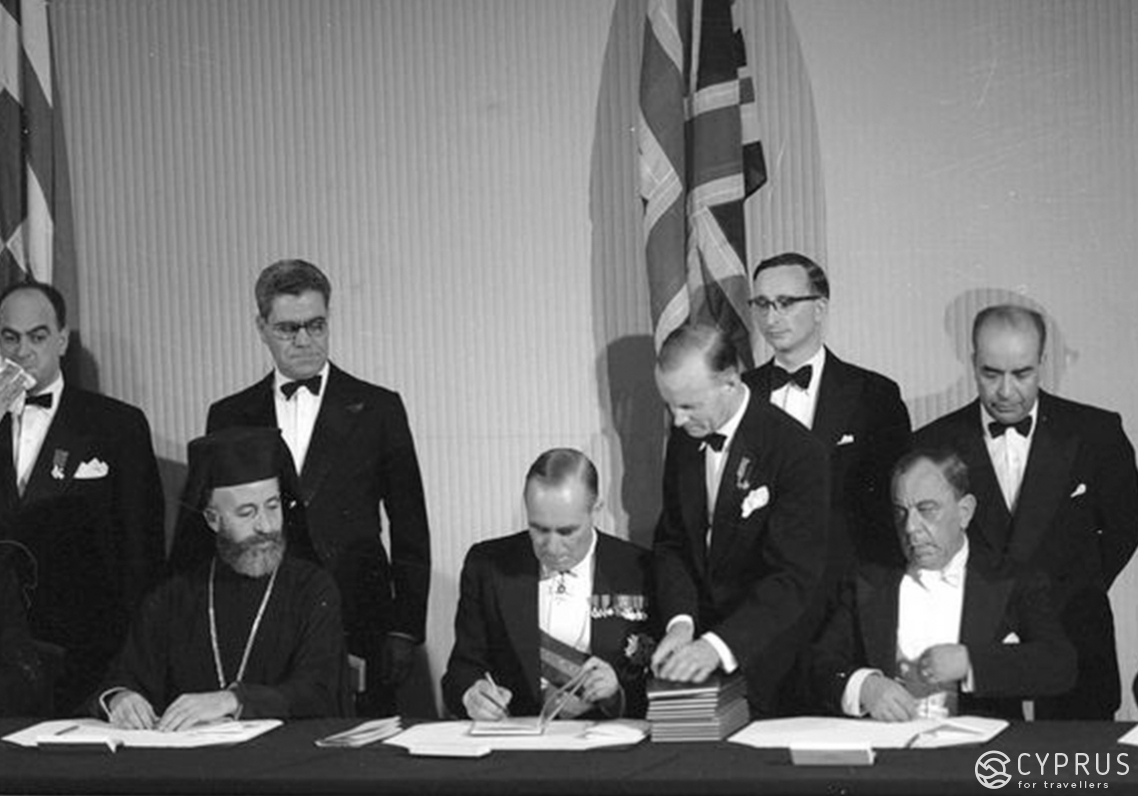
After 1960, other stamps began to circulate in Cyprus. And in general, several sets a year have been issued on the island since that time.
So, why have they never been printed in Cyprus? Stamps, as I was told at the Museum, can be printed all over the world, the only condition is that printing houses have the reliable means of protection against fakes, which are not available in the country.
To this day, since gaining independence, stamps for the Republic of Cyprus are jointly published by Greece and Germany (printed in Greece).
Particular types of stamps were issued for the benefit of Greek refugees from the northern territories of Cyprus in 1974 (postal charity, earlier, in 1974-1977 they were postal and duty stamps).
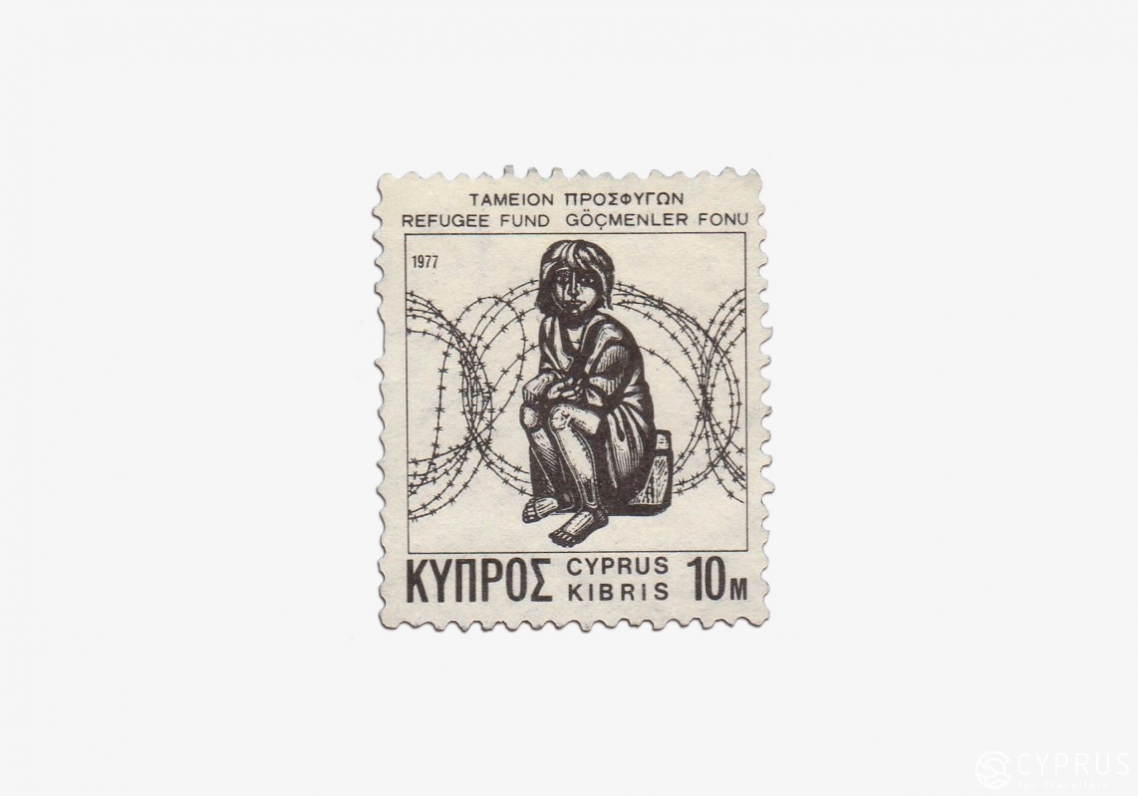
You can also see random sheets from a catalogue on the stands: the stamps inside are of the 1962 issue and feature views of the Bellapais Abbey. All this was printed in Greece, while the issuing party was Germany, hence the German “Zypern”.
In 1963, stamps were published in honour of the Olympic Games and others.
In 1971, another stamp was issued with artefacts from museum collections, as these “objects” were always in high demand and had aroused active interest among the guests of the island for years.
In fact, until 1974, as we said at the beginning, the territory of so-called Northern Cyprus had the same stamps in circulation as in other country regions.
In 1996, an additional set of stamps was issued on the theme of Orthodoxy in Cyprus and in Russia: Cyprus-Russia, Orthodox Christian Religion. This was a collaborative issue: on the stands, you will see stamps with inscriptions made in Greek, English and Turkish.
Similar jubilee issues were also made to honour the anniversary of 1960 when bilateral diplomatic relations were established between the Republic and Greece.
The furniture in the hall is also worthy of attention: racks, chairs and tables covered in dense green cloth, with their wooden parts painted in a glossy black. Although Cypriots would sit at these tables to prepare letters for mailing, they often wrote them at the post office (for "confidentiality" a partition was installed). In those days, they still used ink (many remember!), therefore, for the customers’ convenience, ink tables with feather pens were fitted on each table.
In these final halls, there is a very detailed and colourful exhibition, consisting of newer stamps with images of sights, outstanding personalities and, of course, flashy local cats. Besides, exhibits are on display which will attract the attention of all visitors — regardless of age, enthusiasm for philately or even whether they are up to date with history.
I am talking about various stamping machines (British-made), pairs of scales and two generations of automatic machines for selling stamps that until recently were still in function.
There is even a “post office employee corner”: furniture has been installed, devices and “gadgets” are laid out. Visitors are greeted by two mannequins, one of them dressed in a dark blue uniform with a cap — a postman’s uniform (under British rule), who would carry his correspondence on a bicycle. The second was in a business suit (after 1960), which post office employees from past years used to wear [5].

Above the room’s entrance, you will also notice some copper minting: “copies” of Cypriot stamps from different years — for decoration, beauty and visualisation.
And so, we found ourselves in the last small hall, where, among the very curious display cases, there is an English-made stamping machine on open display. It was used for stamping numerous items of mail to make the lives of postal employees easier: envelopes would pass along a conveyor before dropping into a large bag. Moreover, owing to Brits’ love for accuracy and detail, this machine also has an item “counter” (138 thousand letters were last stamped on it), which can be easily rewound to “0” if necessary.
Here you can examine various scales used for weighing different items — from the lightest letters to small, weighty packages and parcels. Several typewriters, in my opinion, are very eye-catching: they have English and Greek keyboards.
In the foyer, you can always find leaflets and other reference information in different languages: Greek, English, Russian, French and German.
Let me remind you: you may like to know a little more than you’re able to see by yourselves, or from reading explanation guides. Perhaps, after reading our article, several questions have come to mind before your visit. If this is the case, you’d be best to contact Mr P. Loizou, the curator of this permanent exhibition, who will be happy to bring you up to date (you can find his contacts below).
The Museum provides tours for all tourists: adults and children. The most significant influx, I’ve been told, is expected traditionally in the summer. And the quietest period — if you are not a fan of noisy environments while diving into the peaceful world of museum collections, one which requires silence and keen perception — runs from February to April.
Some words from philatelists:
The stamp itself has no value — this appears depending only on economic fluctuations, trends, demand and other factors. The most expensive stamps are unreleased for various reasons; faulty stamps are also highly valued.
Catalogues have been published to determine stamp costs [6], which list prices calculated by specialists after they have conducted market analyses.
The price mainly depends on the stamp's quality and condition: if it is “well-centred”, hasn’t been used and has a wholly preserved adhesive layer on the back, without any damage and scratches — such a copy will be close to the price stated in the catalogue.
There are cases when used stamps are more expensive than unused stamps, but only for countries and stamp series with a short issue period, which were practically unused in postage. In such cases, it is advised to pay attention to how legible the stamp mark is, in addition to whether an envelope is present.
If there are too many defects, the stamp is not worth collecting ... or even as a temporary option!
As for "investment" — it is advised to invest in classic stamps (their limit today runs through 1951).
However, bear in mind: there is also a significant risk of fakes (the “anti-leaders” are the Baltic countries). Only buy copies for your collection from authorised dealers, and for very expensive ones, demand an accompanying certificate!
Germany comfortably has the highest philatelic prestige in the world. It is followed by several other European countries, where, on the whole, the philatelic culture is very strong. After them: the USA and Japan, comfortably followed, as experts say, by Latin America, South Korea and China, who are rising to a sound level.
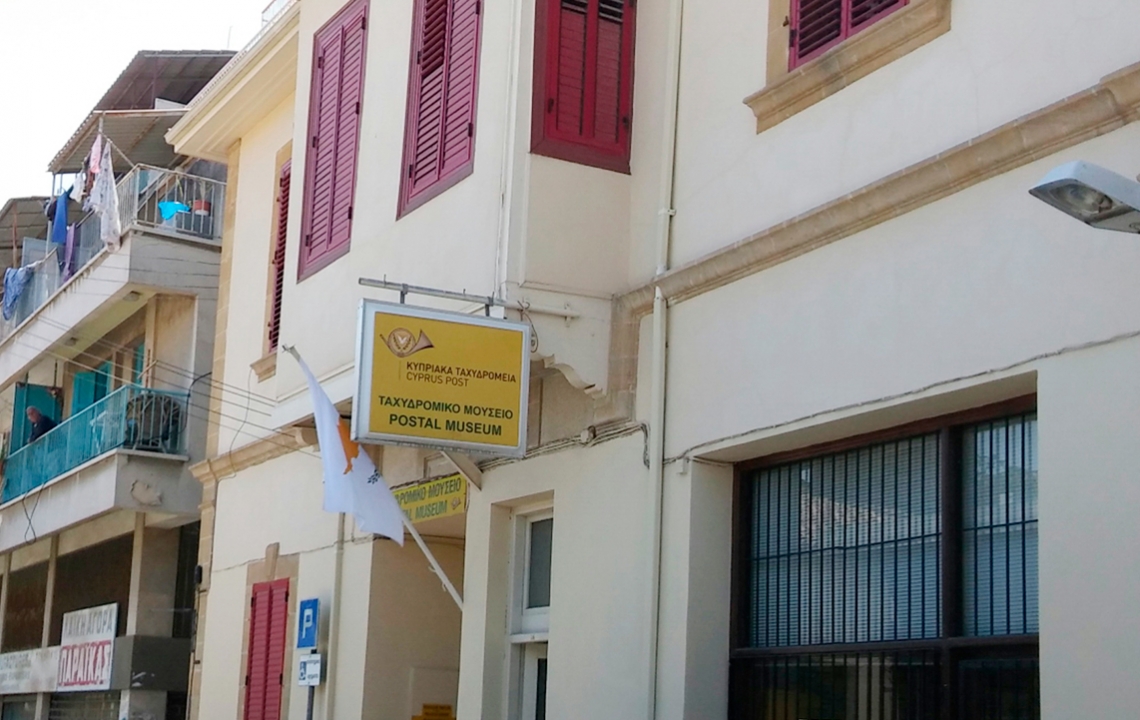
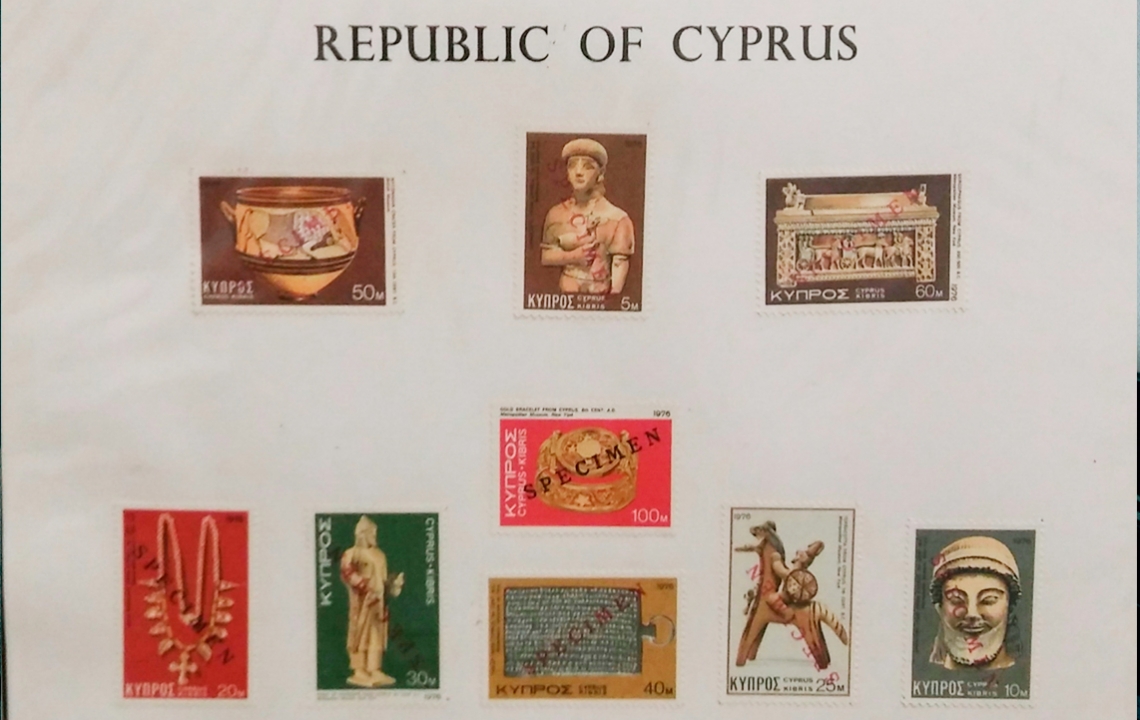
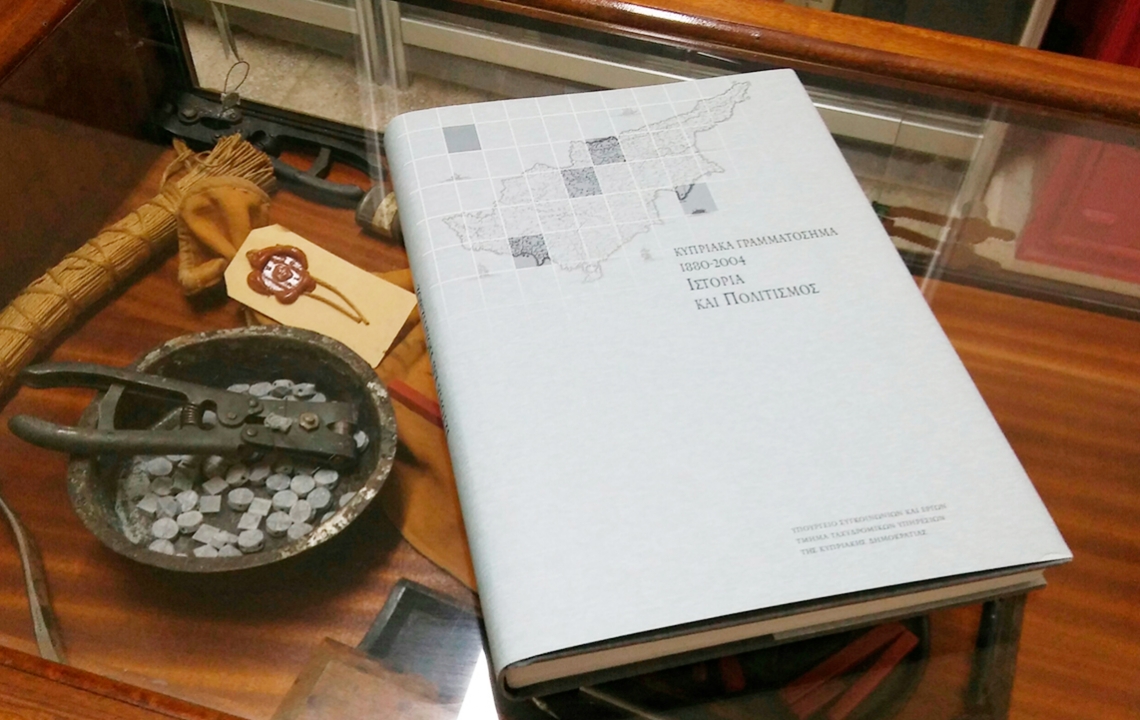
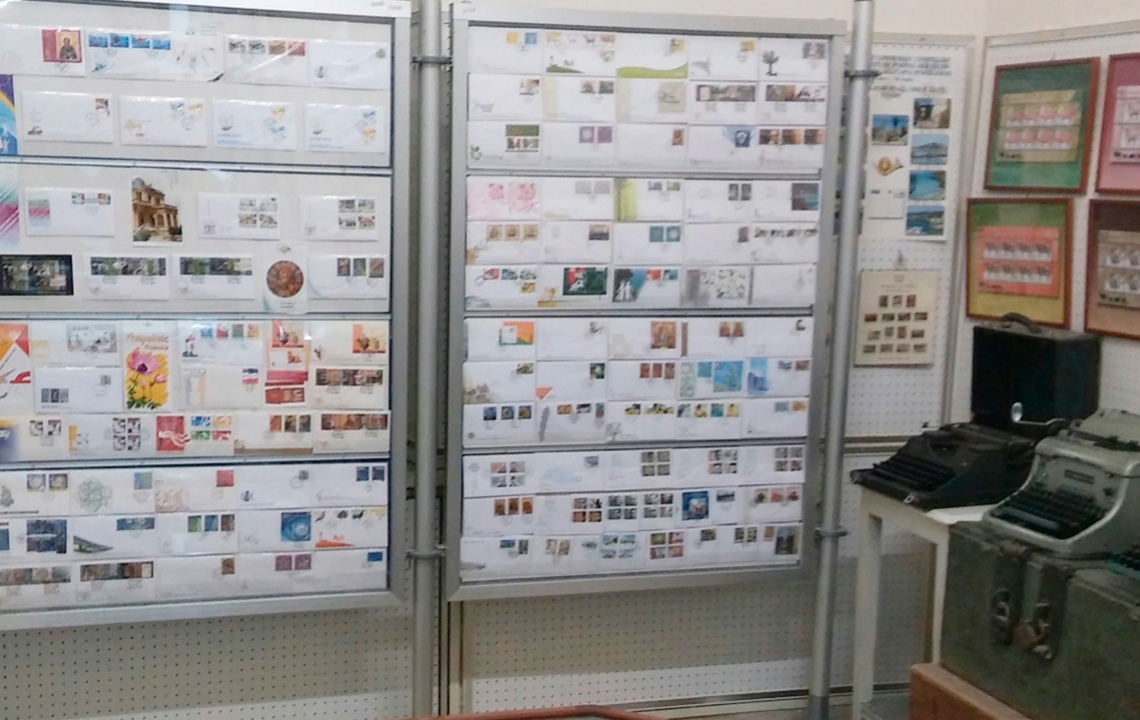
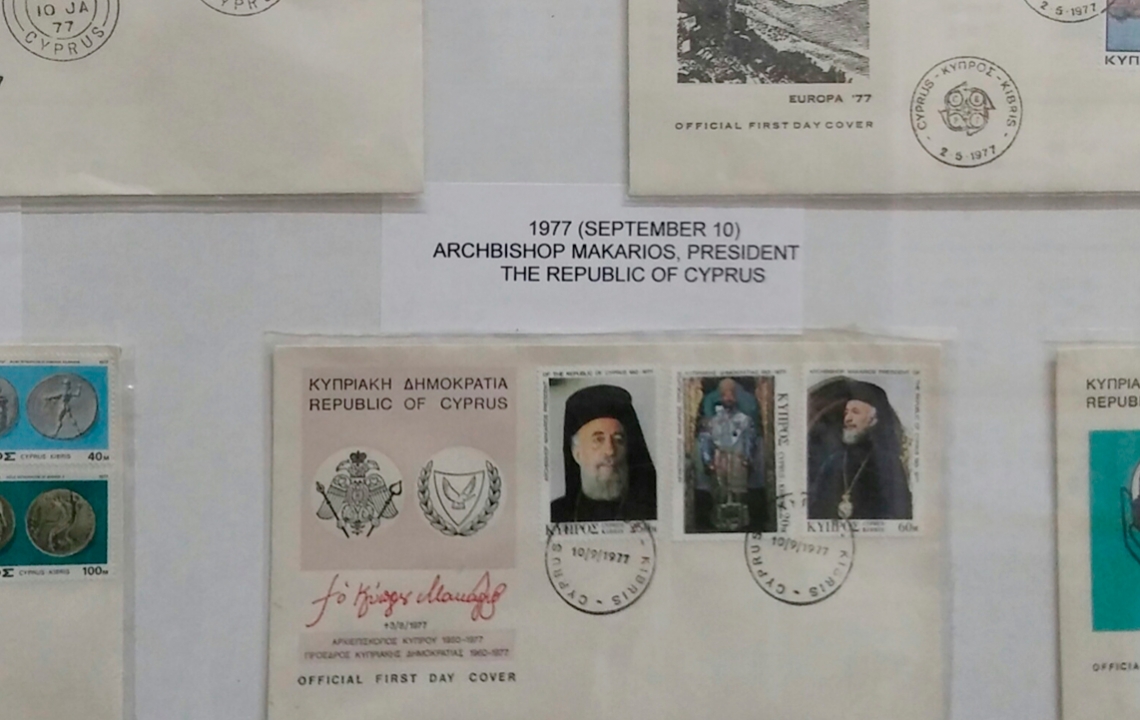
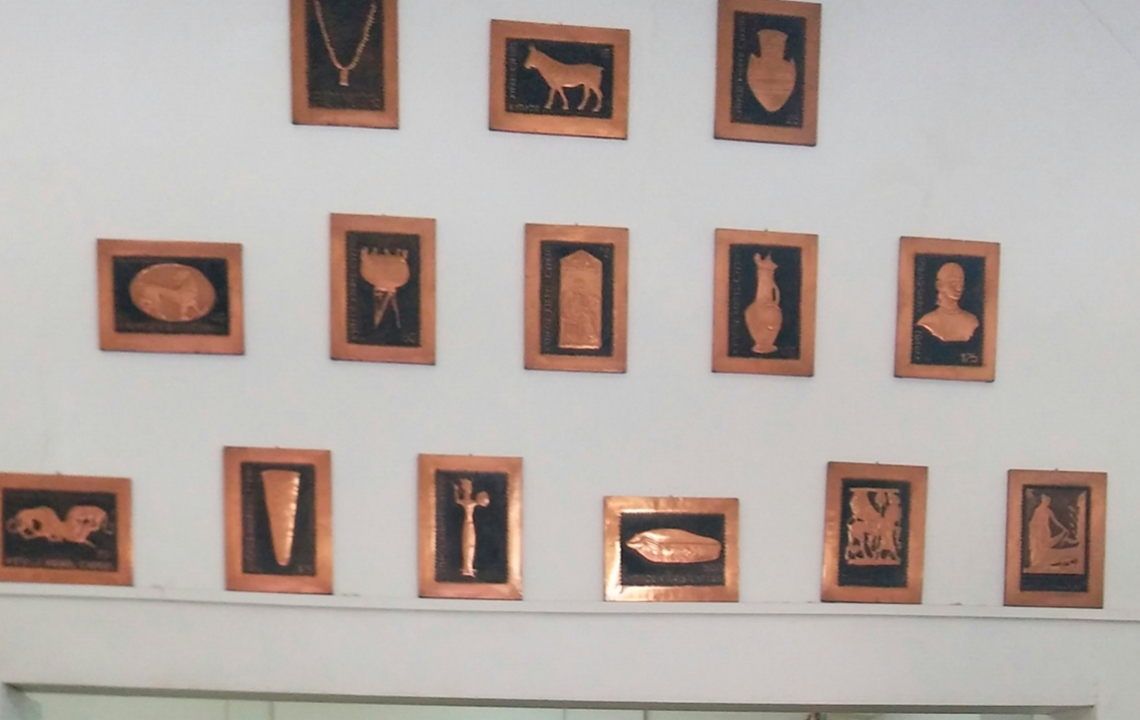
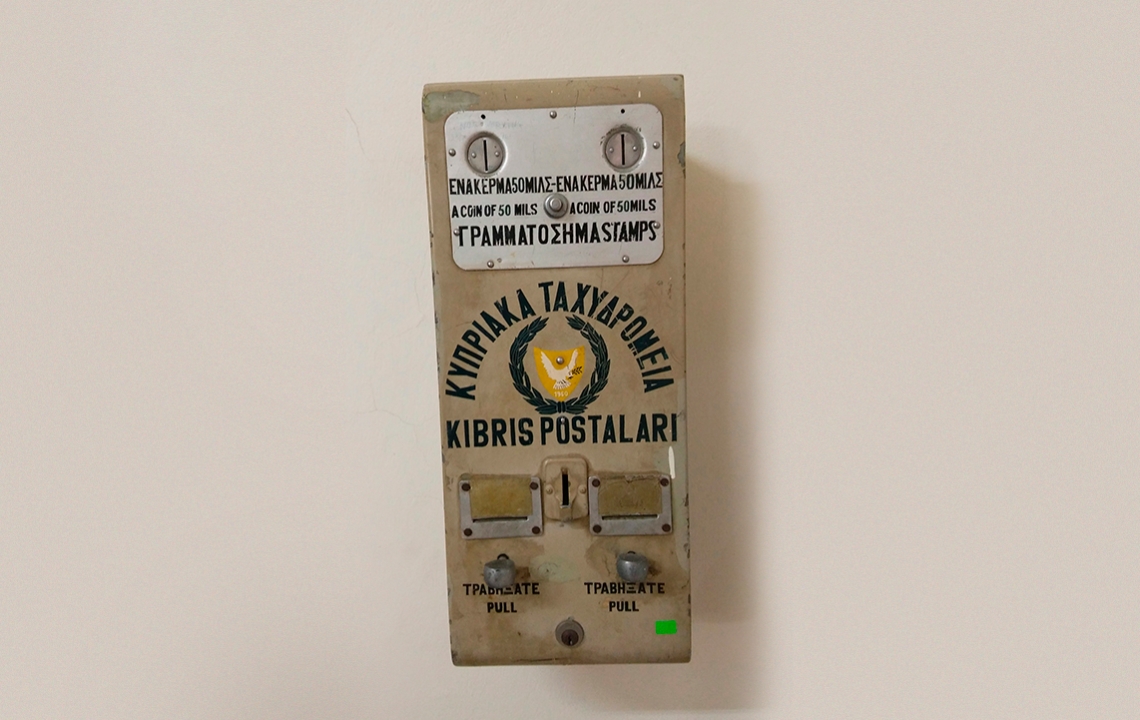
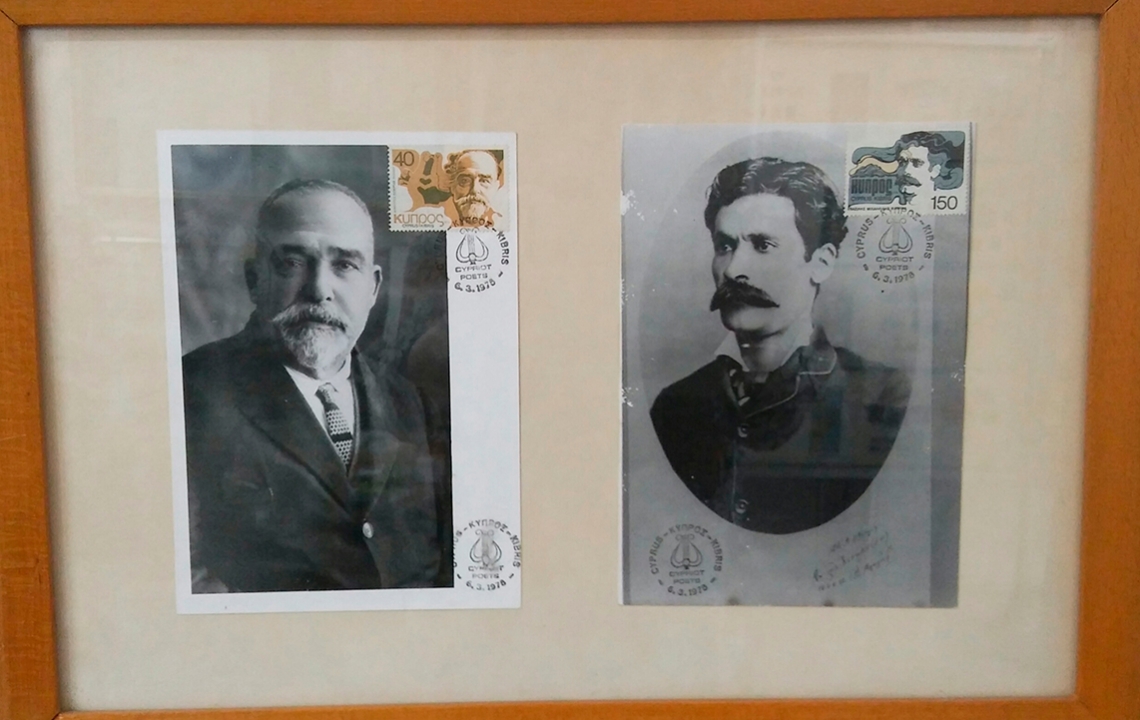
Address and Contacts:
3 Ayou Savvas Street, Old Town in Nicosia
Telephone: +357 22304711, +357 22760522
Opening hours: Mon-Fri 09:00-15:00; Saturdays 09:00-13:00.
Website for those interested in Cypriot stamps: www.cyprusstamps.com
Good Luck! Until Next Time for More Discoveries!
[1] We will talk here about Cyprus before its division due to the 1974 Turkish occupation, and then about the Republic of Cyprus. The occupied territories of so-called Northern Cyprus do not have membership in the Universal Postal Union; its mail moves through Turkey. However, it has its own postal signs: the first stamps with limited capabilities “in the north” were published on 8th April 1970.
[2] In fact, envelope collecting took shape at the turn of the 19th-20th century. Before that, collectors sought to find envelopes possessing stamps with the oldest use date, since in those years, postal administrations issued them, as they say, “without any announcement”. The announcement of new issues began in 1920, which is why “first-day covers” have since appeared. Nowadays, they are stamped and kept clean, later to be sold to dealers or collectors. The “use-by date” is now also declared.
[3] Interestingly, in Russia, as well as in the USA, it is the opposite — outstanding personalities can only be pictured on stamps sometime after they have died.
[4] However, their publication takes place under the control of the Cyprus Postal Service.
[5] It turned out that even today, postal employees have their own uniform but, as they say, “it may be overlooked." Here, for some reason, like in so many state institution offices in Cyprus, workers usually opt for ultra-casual styles (jeans, leggings and T-shirts). Evidently, they are doing their best to otherwise avoid inevitable, boring unification — a small yet very caustic remark by the author.
[6] So, in the English catalogue “Stanley Gibbons”, postal issues of stamps from colonial Cyprus have a place in the “red” volume, following sets for Great Britain and the Commonwealth of Nations from the period: 1840-1952.

